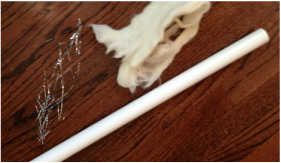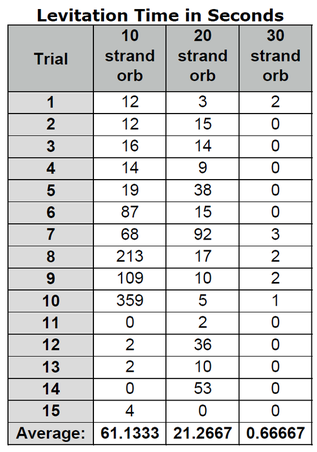Levitating Orb
Question:
How does the number of strands of Mylar™ tinsel affect the ability to levitate a Mylar™ tinsel orb?
Hypothesis:
We predict that an orb with a larger number of Mylar™ strands will float for a shorter amount of time because the more strands of Mylar™ the heavier the orb will be.
Procedure:
Special Needs:
Need enough space for participants to be able to stand up and move around while holding a PVC pipe. |
|
The Science Behind It:
Certain materials can become electrically
charged through rubbing or friction with a different material. When two
materials are rubbed together, a chemical bond is formed between the two surfaces,
called adhesion, and electrical charges move from one material to the other. Some
materials have a tendency to keep extra electrons, and some a tendency to give
them away. This is what creates the charge imbalance between the two objects.
Different materials will get a different polarity and charge force. For
example, wool will charge positively and PVC will charge negatively. In our case, when the Mylar ™ (thin plasticized aluminum foil) orb
comes in contact with the PVC pipe, the orb becomes charged by contact,
resulting in the same charge as the pipe. Since like-charges repel, the orb
will immediately expand to its pre-set shape and levitate. That is the science behind it.
Conclusion:
In conclusion, we accept our hypothesis because the more strands used, the heavier the orb becomes so it floats for a shorter period of time, or not at all. When the orb becomes too heavy the charge isn't enough to make it levitate.
Brandon
|
Zoe a unicorn lover,
excellent dancer, survivor of a broken toe; and loves chemistry. |
Maggie
|




